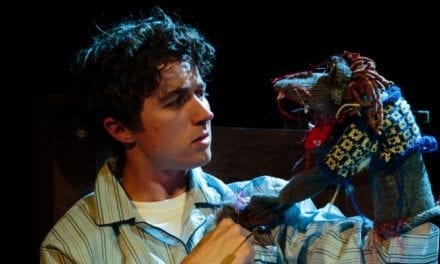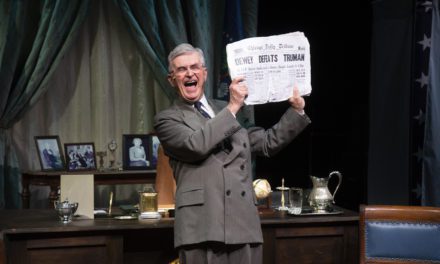OGDEN — One of the best things about being a theatre critic is when you are completely surprised by a piece of work. Such was the case this weekend when I attended Ziegfeld Theatre’s production of Jesus Christ Superstar this weekend. With music by Andrew Lloyd Webber and lyrics by Tim Rice, this show made it’s Broadway debut in 1971. I cannot say I am unfamiliar with it. I am not a fan of most of Sir Webber’s work, and this is a show I usually skip. I do have a special place in my heart for the Ziegfeld Theatre, so I decided to see what director Cassidy Mae Wixon-Heise could do with this material.
I will admit right now I was not prepared. The story is quite loosely based on the last events of the life of Jesus Christ (played by Ben Ames) as recorded in the gospels, from an imagined perspective of Judas Iscariot (played by Dante J.L. Murray), all set to rock music. While Rice and Webber’s other rock opera Joseph is no stranger to the Utah stage, this is only the third time our outlet has reviewed a production. While my tendency to dislike the show in the past has nothing to do with the subject matter, I can see why others may not feel comfortable with it, and that type of warning still stands. Having said that, the realism and frankly horror that director Wixon-Heise has pulled out of the script and weaved onto the stage is exactly what I believe has changed what was once for me a dull show into a fascinating and contemplative social commentary.
The Zig’s website contains a warning connected to this show for violence and depictions of suicide. These warnings should be heeded. I feel like the violence is used perfectly for the storytelling, but it is there and I do believe there will be those who will not like the show as a result.
The ensemble in this show was magnificent. The way they blended the choreography by Austin Archer into the storytelling was so interesting. From the opening number, where the cast is actively showing praise in their movement, to the changes throughout the show building to the final song, where the more stiff and robotic movements show the change which can happen so quickly in how we praise and worship celebrity.
I found this storytelling supported in the costume design by Stephanie Davis. From the torn costumes to the dark hooded figures of Caiaphas and his gang, the direction these technical elements made was haunting. The small elements of haunting and horror added really show one of the most famous stories in history is laced with some of the most terrible sides of humanity. The final pieces developing this theme was the set design by Erica Choffel, projection design by Carson Sabin, and lighting design by Troy Martell. The visuals of this production brought it to life in a way that no other production of Jesus Christ Superstar has ever done.
Of course all of this was contingent on the cast pulling together the direction of Wixon-Heise. As Judas, Murray does a fantastic job shining a light on the shadows of the story. Murray’s powerful vocals were great, but what was more interesting was how he interacted with Ames as Jesus, and the balance that Ames brings was intriguing. Aurora Nelson as Mary Magdalene provided some of the most beautiful vocals of the night, singing the popular “I Don’t Know How To Love Him” and “Everything’s Alright”.
I do not even know how to explain what I witnessed with the final act of this production. The symbolism from the pain, the blood on the hands, how it affects everyone from those who witness to those who worship, was a lot more than I expected when walking into the theatre. For a show performed countless times in hundreds of places, one of the best things a director can do is to find a way to make the story more relevant and powerful. Wixon-Heise took a tale that has been told in different ways for thousands of years and completely enthralled me with her interpretation.





